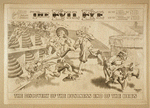"He drew open the two bottom drawers and found little of immediate interest. There were boxes of writing-paper and envelopes, notepads, a wooden box containing a collection of ballpoint pens and, in the bottom drawer, two folded hand towels and a toilet bag containing soap, a toothbrush and toothpaste. A smaller zipped bag held Venetia Aldridge's make-up, a small bottle of moisturizer, a compact of pressed powder, a single lipstick.
Kate said: 'Expensive but minimal.'
Dalgliesh heard in her voice what he himself had so often felt. It was the small chosen artefacts of daily life which produced the most poignant memento mori. "
--P.D. James, A Certain Justice (1997)
Is it true that the most quotidian material objects most aptly characterize and memorialize a person? Or is it the keepsakes and treasured objects? Or is it those meant for public exhibition and display--the furnishings, paintings, hard-covered books? While all such objects say something about a person, I suspect that murder mystery writer P.D. James correctly discerns that everyday material culture--particularly items such as toiletries which are most intimately in contact with a body--are the most revelatory.
James also interestingly adapts the meaning of memento mori in this passage. Typically, such "reminders of death" are meant to underscore life's brevity and to remind the living that they too are soon to die. Memento mori as such perform a kind of leveling fuction as opposed to making one person distinct. However, the half-used cosmetic or sundry item is one of the most powerful conveyors of absence, loss, and indeed, the brevity of life.
Friday, June 25, 2010
Subscribe to:
Post Comments (Atom)






No comments:
Post a Comment